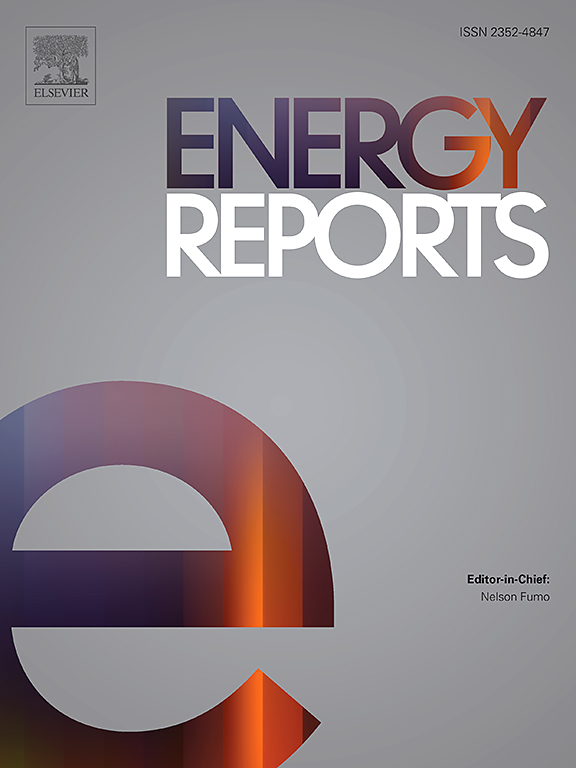基于dfig的风电场交流电压和无功控制:补偿和弱电网中缓解次同步谐振的比较研究
IF 4.7
3区 工程技术
Q2 ENERGY & FUELS
引用次数: 0
摘要
将基于双馈感应发电机(DFIG)的风电场集成到弱串联补偿系统中可能会引入显著的次同步谐振(SSR)风险,从而影响系统的稳定性。本文详细比较分析了两种控制策略,即无功功率控制和交流电压控制,这两种控制策略在与电网侧变流器(GSC)相关的外部控制回路中实现,以减轻基于dfig的系统中的SSR。比较基于模态分析,并通过评估几种工况和关键控制参数来研究SSR的动态风险。这包括不同级别的串联补偿、弱点、锁相环(PLL)带宽以及与转子侧转换器(RSC)相关的电流控制参数。结果表明,交流电压控制具有优良的动态性能和较小的SSR风险阻尼,尤其适用于无功控制不稳定的高补偿电网。此外,灵敏度分析强调了RSC调谐和锁相环带宽在保持系统稳定性以避免SSR风险方面的关键作用。这些发现为基于dfig的风电场的控制设计策略提供了实用的见解,特别是在弱电网和补偿电网中的应用,提高了电网的可靠性,降低了SSR的风险。本文章由计算机程序翻译,如有差异,请以英文原文为准。
AC voltage and reactive power control in DFIG-based wind farms: A comparative study for mitigating sub-synchronous resonance in compensated and weak networks
Integrating Doubly-Fed Induction Generator (DFIG)-based wind farms into weak and series-compensated systems may introduce significant subsynchronous resonance (SSR) risks, compromising system stability. This paper presents a detailed comparative analysis of two control strategies, reactive power control, and AC voltage control, implemented in the outer control loops related to the grid side converter (GSC) to mitigate SSR in DFIG-based systems. The comparisons are based on modal analysis, and the dynamic risk of SSR is investigated by evaluating several operating conditions and key control parameters. This includes different levels of series compensation, weakness, phase-locked loop (PLL) bandwidth, and current control parameters associated with the rotor-side converter (RSC). The results demonstrate that AC voltage control provides superior dynamic performance and less SSR risk damping, especially in highly compensated grids where reactive power control is unstable. Furthermore, sensitivity analysis highlights the critical role of RSC tuning and PLL bandwidth in maintaining system stability to avoid SSR risks. These findings offer practical insights for control design strategies in DFIG-based wind farms, particularly for applications in weak and compensated grids, enhancing grid reliability and reducing the risk of SSR.
求助全文
通过发布文献求助,成功后即可免费获取论文全文。
去求助
来源期刊

Energy Reports
Energy-General Energy
CiteScore
8.20
自引率
13.50%
发文量
2608
审稿时长
38 days
期刊介绍:
Energy Reports is a new online multidisciplinary open access journal which focuses on publishing new research in the area of Energy with a rapid review and publication time. Energy Reports will be open to direct submissions and also to submissions from other Elsevier Energy journals, whose Editors have determined that Energy Reports would be a better fit.
 求助内容:
求助内容: 应助结果提醒方式:
应助结果提醒方式:


